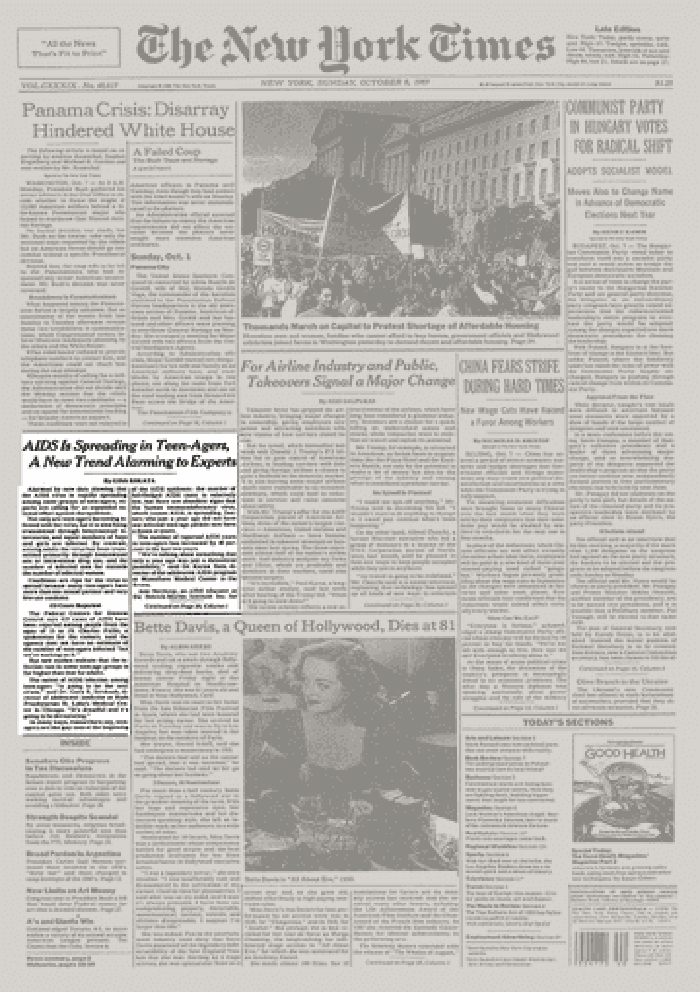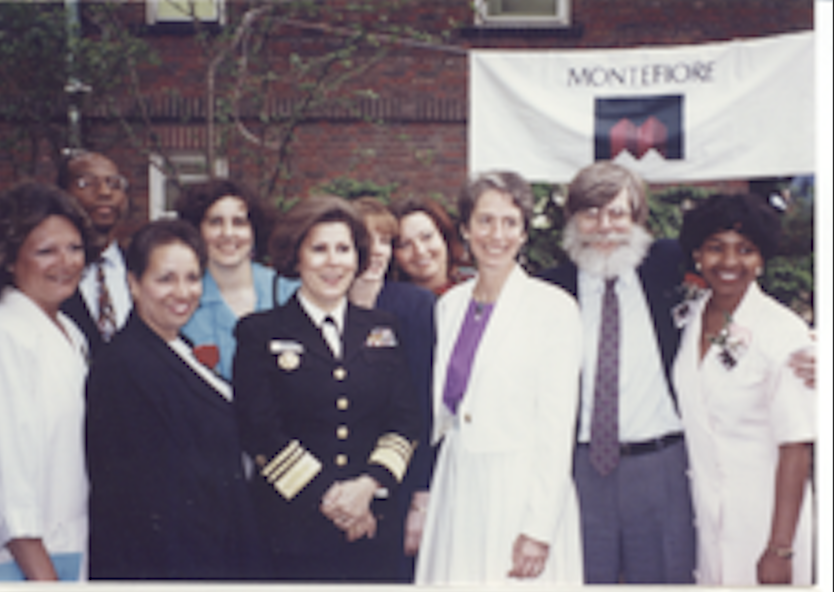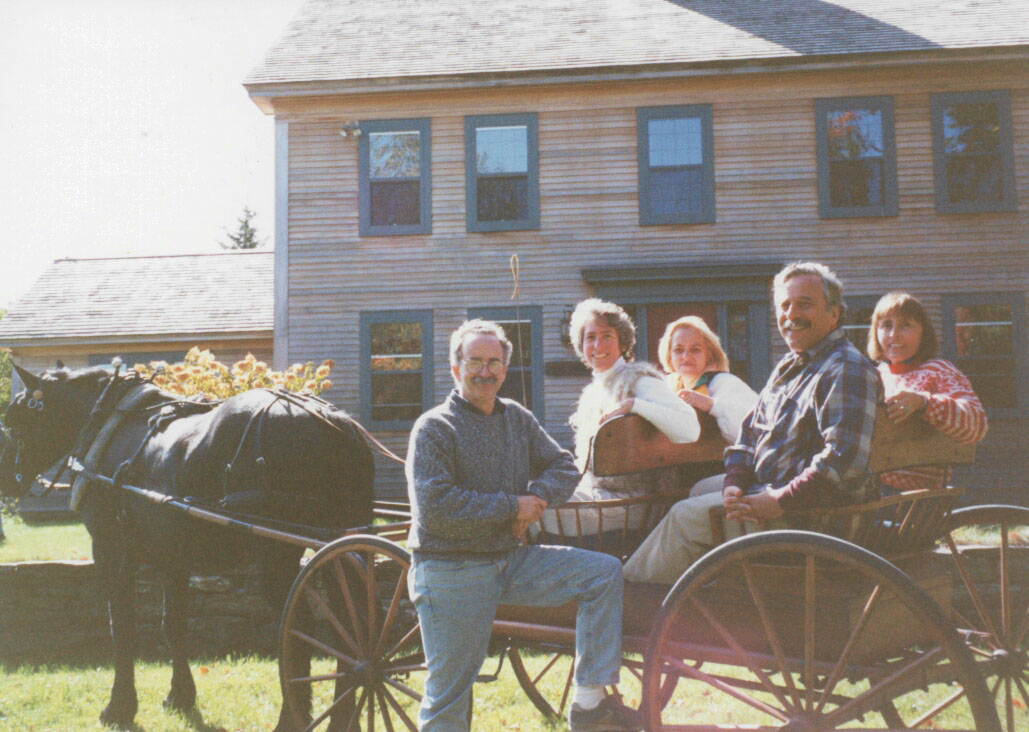In the late 1980’s we wrote about the HIV/AIDS epidemic’s next wave as being in adolescents. Only little children and adults had been known to be affected, yet we knew from modeling that many adults with AIDS were infected as teenagers, many babies born with HIV had infected young mothers most of whom had not been tested and were unaware of their HIV+ status. We published projections of other sexually transmitted infections (STI’s) in adolescents postulating that HIV would ‘follow in the footsteps’ of these infections and tried to bring awareness to a silent spread that was not recognized by researchers or the public at that time. Our first publication was entitled, “AIDS in Adolescence: A Rationale for Concern” (Hein K: AIDS in adolescence: a rationale for concern. New York State Journal of Medicine, 87:290–5, 1987.) building the case for why we needed to focus on young people as the next wave of the epidemic. We said that the attention was being erroneously focused on “the tail of the whale” where the epidemic was obvious (at the time mostly in adult men and babies) instead of the “head of the whale” namely adolescence where the epidemic was silently taking hold without the knowledge or attention of the public, young people, health care providers or government agencies.
Adolescent HIV/AIDS
The Adolescent HIV/AIDS Program at Montefiore Medical Center: The first comprehensive program for research, care, policy, and advocacy in the country (in the world). Our publications trying to raise awareness of the threat of HIV in the adolescent community propelled us to open a program in 1987, the first of its kind. Some thought we were making a big deal out of nothing, since so few young people were sick or knew that they were HIV infected and even mocked our efforts, called us “The Emperor’s New Clothes Clinic.”
Some recognized the threat and accepted our rationale for concern as the basis for action. CDC gave the program $1 million to build the research, care, evaluation, and advocacy program we thought would be critical at the time. Our prescient and dedicated CDC Program officer, Helene Gayle championed our cause. Other adolescent programs began to develop around the country. Sadly, we were right in our predictions. Over the past 35 years the incidence of HIV has remained rather steady at about 44,000 new cases diagnosed each year, despite the introduction of so many effective medications to lengthen both the quality of life and years lived by people with HIV, so that it is currently considered more of a chronic illness rather than the original conceptualization as a diagnosis meaning certain death, usually within a decade. (Hein K: AIDS in adolescence: a rationale for concern. New York State Journal of Medicine, 87:290–5, 1987.).

AIDS Is Spreading in Teen-Agers,
A New Trend Alarming to Experts
Oct. 8, 1989
The Montefiore Program, still among the largest in the country has been ably led by Donna Futterman who took over the reigns as Director when I went (then stayed) in Washington DC to pursue health policy on a wider level. (Vermund SH, Hein K, Gayle H, Cary J, Thomas P, Drucker E: Acquired Immunodeficiency Syndrome among adolescents: Case surveillance profiles in New York City and the rest of the US. Am J Dis Child, 143:1220–5, 1989.) Some of the notable accomplishments have included the breakthrough at NIH where adolescents 12-18 were not permitted into clinical trials to an extensive network of studies focusing on youth in the NIH “ATN (Adolescent Treatment Network)” now in its 3rd round of multi-year funding across the country. (Hein K: Commentary on adolescent acquired immunodeficiency syndrome: The next wave of the human immunodeficiency virus epidemic? J Pediatrics, 114:143–9, 1989.) A major milestone in public recognition of AIDS in adolescence was the publication on the front page of the New York Times of an article by Gina Kolata describing adolescence as the next wave of the epidemic and referring to Montefiore’s program as one of the efforts to bring attention, care and interventions. ( Hein K: AIDS in adolescence: Exploring the challenge. J Adolesc Health Care, 10:10S–35S, 1989.) Magic (Ervin) Johnson’s announcement a few years later once again propelled HIV into the limelight and helped raise awareness through the foundation he formed to intervene in the growing epidemic. Publication of my book, co-authored with Theresa di Geronimo, “Aids: Trading Fears for Facts” published by Consumer Report Books aimed at the young adult audience ended up distributing 103,000 volumes in 4 languages. This brief guide helped young people identify their own role in the epidemic, either as a person at risk, a peer educator or simply as a young person armed with knowledge about the aspects of HIV and its effect on this developmental stage of life. Having a diagram of how to properly use a condom brought controversy at a time when accurate, explicit language was banned from public discourse about HIV.



